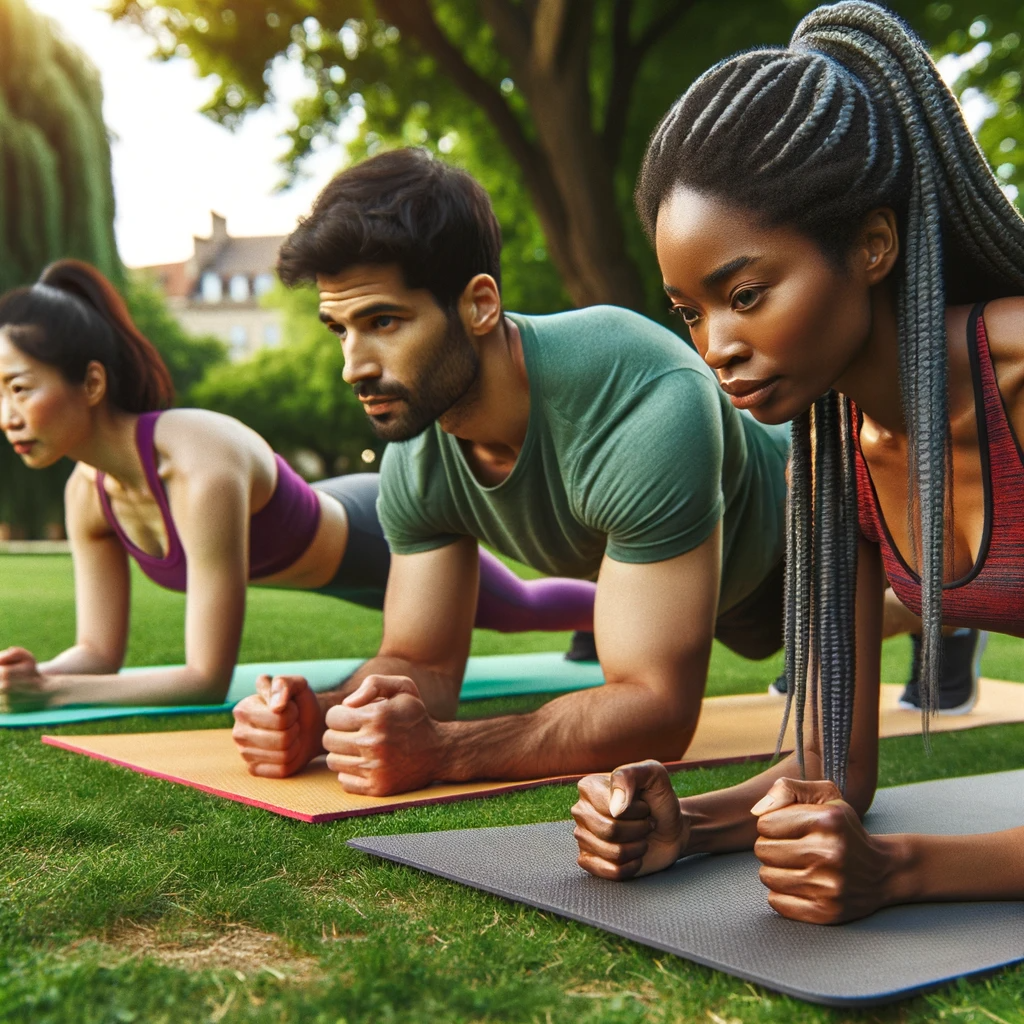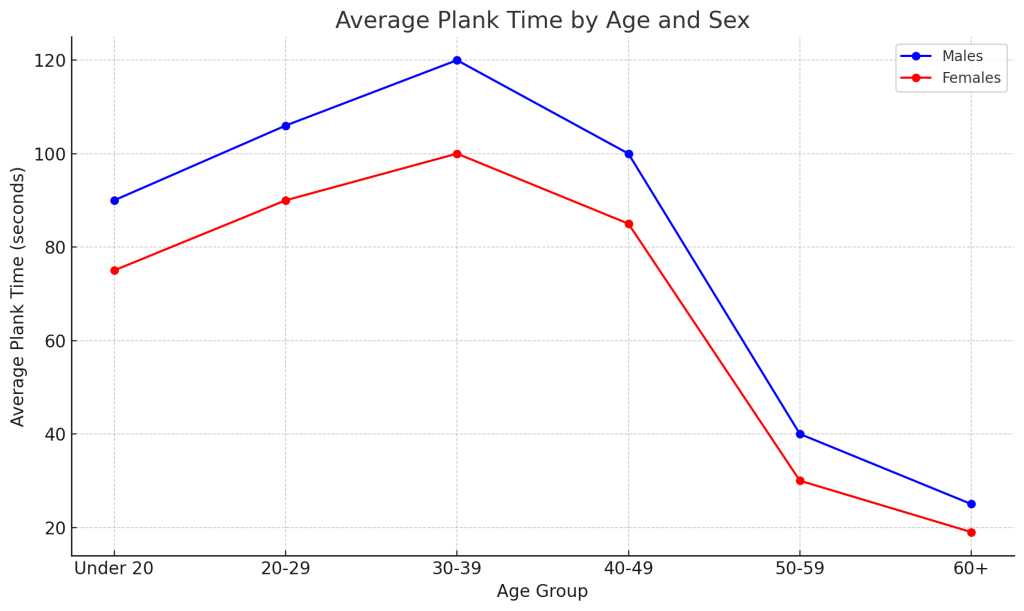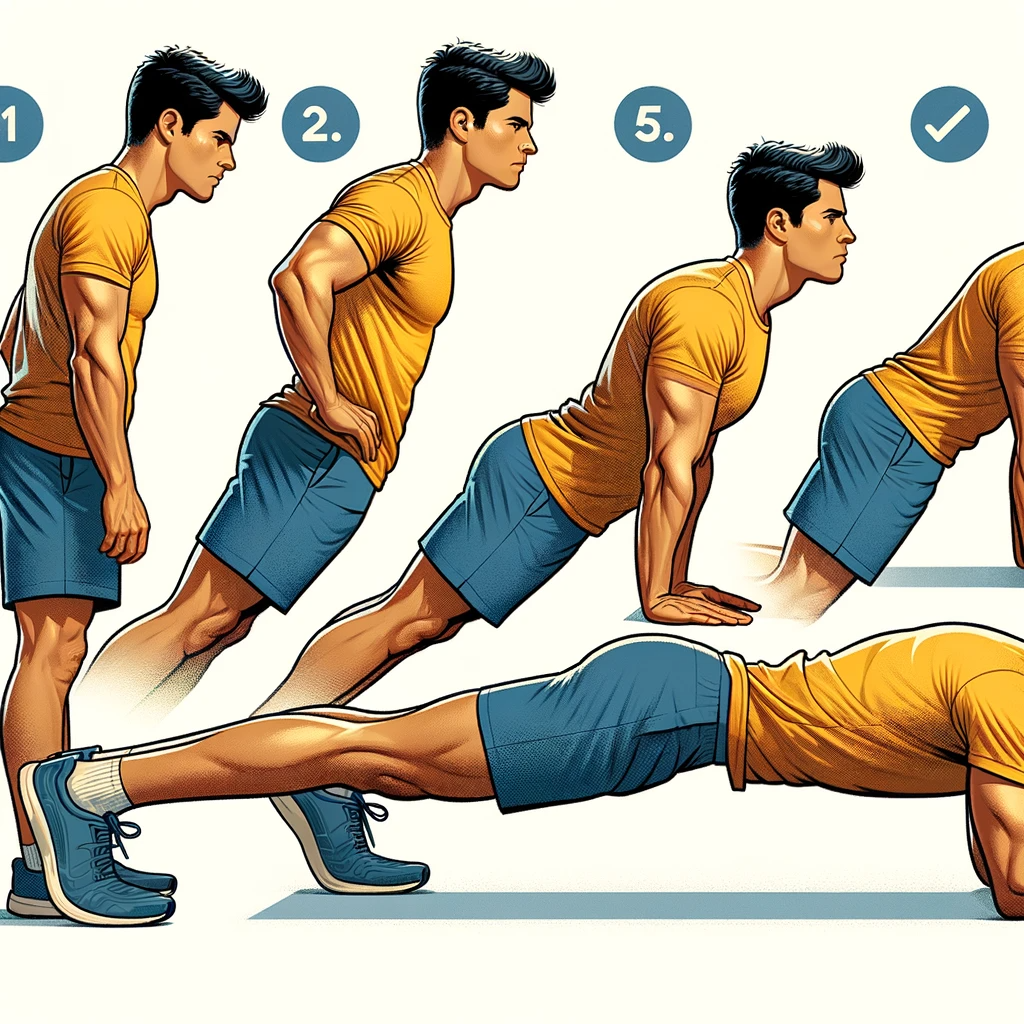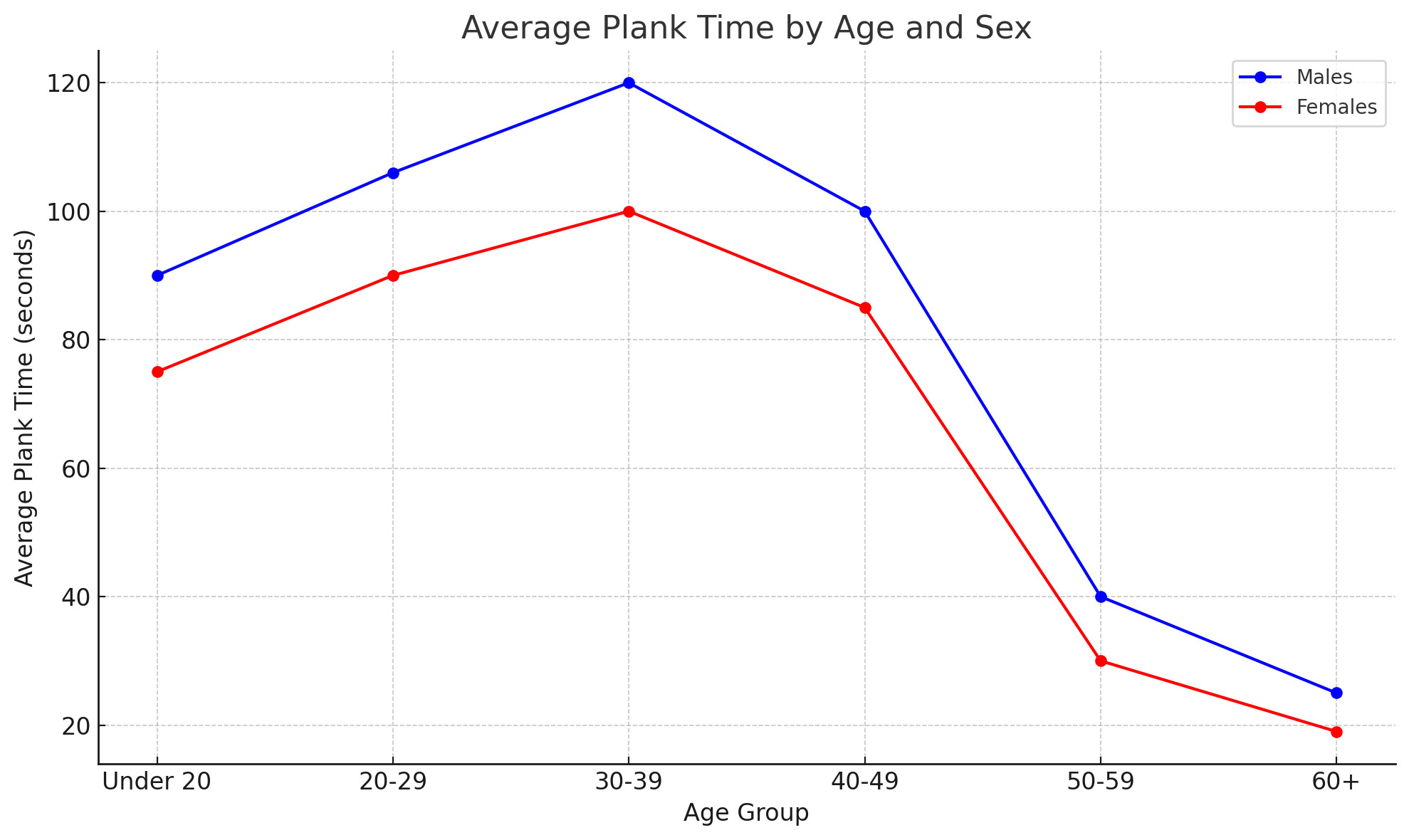Welcome to the intriguing world of plank exercises, a cornerstone in modern fitness routines known for their profound impact on core strength and overall endurance. In this journey, we dive into a fascinating aspect often left unexplored: the average duration one can hold a plank, dissected by age and sex. Planking, a seemingly simple exercise, challenges the body to maintain a position of strength and stability over time. But how does this endurance vary across different age groups? Does gender play a role in how long one can sustain this muscle-tensing stance?
As we unravel these questions, we invite you to join us in uncovering the intriguing patterns and insights hidden within average plank times. This exploration not only promises to enhance your understanding of physical capabilities but also inspires a deeper appreciation of the plank’s role in fitness. Let’s embark on this enlightening journey together, challenging our assumptions and learning to appreciate the plank in a whole new light.
Understanding Planks
The plank is a powerhouse of an exercise, simple yet immensely effective. At its core, it’s a bodyweight maneuver that requires maintaining a position akin to a push-up for as long as possible. To perform a plank, you begin by lying face down. Then, raise your body, resting on your forearms and toes, while keeping your body straight as a board, hence the name. It’s crucial to keep your back flat and avoid sagging or piking your hips. Your gaze should be down, and your neck aligned with your spine, creating an unbroken line from head to heels.

The Benefits of Planks
But what makes the plank so special? It’s a full-body workout, engaging multiple muscle groups simultaneously. The primary focus is on the core – the muscles around your torso and pelvis. Regular planking strengthens your spine, obliques, and lower back, contributing to better posture and balance. It’s not just about building muscle; planks also enhance endurance and flexibility, particularly in the posterior muscle chain.
Beyond core strength, planks offer comprehensive benefits for overall fitness. They improve stability, which is crucial for athletic performance and everyday activities. Planks also encourage mental tenacity, as holding the position requires focus and determination. Additionally, since they can be performed anywhere without any equipment, planks are incredibly versatile and accessible.
Incorporating planks into your fitness routine can lead to significant improvements in your overall physical health and athletic performance. They are a testament to the power of simplicity in exercise, proving that you don’t always need complex equipment or movements to achieve a strong, fit body.
World Record in Planking
Tom Hoel, a Danish fitness instructor, has set a formidable world record in the plank exercise, holding the position for an astonishing 4 hours and 28 minutes. This achievement shattered the previous record by a full 2 minutes, highlighting not only Hoel’s physical prowess but also his incredible mental fortitude.
Hoel’s journey to this record is as impressive as the record itself. He began his plank training as a personal challenge, initially incorporating planking into his CrossFit classes. His interest in setting a new world record sparked when he managed to hold a plank for 8 minutes during a self-test. This milestone led to a rigorous and structured training regimen, where Hoel progressively increased his planking time every week, starting from 5 hours in July 2014 to an astounding 10 hours per week by January 2015. His preparation involved a meticulous increase in total plank time, alternating between intensive and lighter weeks, culminating in weeks where he would plank for up to 18 hours.
On the day of the record attempt, Hoel faced not just physical but also mental challenges. He experienced a significant crisis during the plank, battling with his thoughts and almost giving up after thinking he hadn’t surpassed his previous record. However, upon realizing he had already beaten his former record, he mustered the mental and physical strength to continue, ultimately setting the new world record.
Hoel’s achievement in planking is a testament to the extraordinary capabilities of the human body and mind when pushed to their limits. His record serves as an inspiring example of how dedication, rigorous training, and mental resilience can lead to extraordinary achievements.
Planks for Different Age Groups
Plank exercises, known for their remarkable benefits in strengthening the core and enhancing overall fitness, exhibit a notable variation in performance across different age groups. This variation is primarily due to changes in physical strength, endurance, and flexibility as people age.
Younger Individuals
For younger individuals, especially those under 20, planking times can be quite impressive, often ranging from 1 to 2 minutes. This duration is a reflection of their generally higher physical fitness levels and greater muscle elasticity. As people move into their 20s and 30s, the average planking time tends to be slightly lower but still robust, indicating sustained physical capability. For instance, individuals in their 20s can typically hold a plank for about 1 minute and 30 seconds, while those in their 30s might average around 1 minute.
Middle-Aged Adults
As we reach the 40s and 50s, there’s a noticeable decline in average plank times, with individuals in their 40s holding a plank for approximately 50 seconds and those in their 50s for about 40 seconds. This decrease is largely due to the natural aging process, where muscle strength and endurance gradually diminish. For seniors aged 60 and above, the average time further reduces to around 30 seconds. This reduction underscores the impact of age on physical capabilities, particularly in terms of muscle mass and joint flexibility.
It’s crucial for people, especially seniors, to consult with a healthcare professional before incorporating planks or any new exercise into their routine. This is particularly important for those with existing health conditions, such as heart issues, high blood pressure, or musculoskeletal problems. A doctor can provide personalized advice based on an individual’s health history and current physical condition, ensuring that they undertake planking and other exercises safely and effectively.
Overall, while planking is a highly beneficial exercise for individuals of all ages, it’s important to recognize and respect the variations in performance across different age groups. Proper guidance and a tailored approach to exercise can help maximize the benefits of planking while minimizing the risk of injury, especially for older adults.
Average Plank Time by Age and Sex (with Chart)
The analysis of average plank times by age and sex reveals insightful trends and differences. The data, as illustrated in the chart below, shows a distinct pattern of plank duration across various age groups for both males and females.

Trend Over Age Groups
A clear trend is visible where the average plank time decreases with age. This pattern is consistent for both sexes, indicating a general decline in physical endurance and strength as age progresses. For instance, individuals in their 20s can hold a plank for longer than those in their 50s or 60s. This decline is a natural outcome of the aging process, where muscle strength, endurance, and flexibility gradually diminish over time.
Differences Between Males and Females
The chart also highlights differences in plank times between males and females. Generally, males tend to have slightly longer plank durations compared to females in the same age group. This difference could be attributed to variations in muscle mass and distribution between the sexes. However, it’s important to note that these are averages and individual capabilities can vary widely.
Specific Age and Sex Comparisons
At younger ages, particularly in the under 20 category, the difference in plank times between males and females is less pronounced. As age increases, the gap in average times between the sexes becomes more noticeable, with males typically maintaining longer durations than females. However, both sexes experience a decline in plank times as they age, underscoring the universal impact of aging on physical fitness.
Health and Fitness Implications
These findings emphasize the importance of maintaining an active lifestyle and incorporating strength and endurance training into fitness routines, regardless of age or sex. They also serve as a reminder of the need for personalized fitness goals and expectations, taking into account one’s age and physiological differences.
In conclusion, while the ability to hold a plank decreases with age and varies between sexes, the exercise remains beneficial for all. It underscores the importance of continuing to engage in physical activities and strength training as one ages, tailoring exercises to individual capabilities and health conditions.
Plank Time for Children
When it comes to children, particularly those as young as 6 years old, the average plank time can vary significantly, influenced by various factors like physical development, weight, and overall fitness level.
For a 6-year-old boy, the average plank time tends to be considerably lower than that of adults, primarily due to their developing muscular strength and coordination. Research indicates that boys of average weight at this age can hold a plank for about 83 seconds on average. However, those who are overweight or obese might find it more challenging, with an average plank time of around 43.9 seconds. This difference illustrates how weight and physical condition significantly impact a child’s ability to perform and sustain a plank.
In children, the development of core strength, balance, and muscle coordination is still in progress. Hence, their plank times are not just a reflection of physical strength but also of their developmental stage. Engaging in regular physical activities, including exercises like planking, can be beneficial for children, aiding in their overall physical development and promoting healthier weight management.
It’s also important to consider that plank times should not be the sole focus, especially for children. The emphasis should be on encouraging regular physical activity and making exercises like planking a fun and enjoyable part of their routine, rather than a competitive or strenuous task. This approach helps in fostering a positive attitude towards fitness and physical well-being from an early age.
In conclusion, while a 6-year-old boy’s average plank time can provide some insight into his physical capabilities, it’s crucial to consider the broader context of his overall development and fitness. Encouraging a healthy and active lifestyle is key to supporting their growth and physical well-being.
How to Perform Planks
Performing a plank correctly is essential to maximize its benefits and minimize the risk of injury. Here’s a step-by-step guide to help you execute this exercise with proper form:
- Start Position: Begin by lying face down on the floor or a yoga mat. Ensure your arms are at your sides and legs are straight.
- Elbow Placement: Bend your elbows and place your forearms on the floor. Your elbows should be positioned directly beneath your shoulders. Clasp your hands together if that feels comfortable.
- Engage Your Core: Tighten your abdominal muscles. It’s crucial to engage your core throughout the exercise to support your spine.
- Lift Your Body: Push up off the floor, raising your body onto your toes and forearms. Keep your body in a straight line from your shoulders to your ankles. Avoid any sagging or arching in your lower back.
- Align Your Head and Neck: Your head should be in line with your back, and your eyes gazing down at the floor. This alignment ensures that your neck remains a neutral extension of your spine.
- Hold the Position: Maintain this position, keeping your hips level and your breathing steady. As a beginner, start by holding the plank for 20 to 30 seconds. As you build strength and endurance, gradually increase the duration.
- Return to Start: Gently lower your body back to the floor. It’s important to exit the plank in a controlled manner to avoid any strain.
- Rest and Repeat: Rest for a brief period before attempting another plank. Over time, you can work up to repeating the exercise several times in a session.

Points to Remember
- The quality of the plank is more important than the duration. Focus on maintaining good form rather than holding the position for a longer time.
- Breathing is key. Ensure you breathe normally throughout the exercise to maintain proper form and effectiveness.
- If holding a standard plank is too challenging at first, modify the exercise by lowering your knees to the floor.
- Gradual Progression: As with any exercise, gradual progression is vital. Start with shorter durations and as you gain strength, increase the time you hold the plank.
- Listen to your body. If you feel any pain or discomfort, especially in your lower back or shoulders, stop and reassess your form.
By following these steps and focusing on proper form and gradual progression, you can effectively incorporate planks into your fitness routine and enjoy the full range of benefits this exercise offers.
Planks, a simple yet effective exercise, are beneficial for individuals of all ages, as we’ve explored through various aspects in this blog. From Tom Hoel’s impressive world record to the variations in average plank times across different ages and sexes, planks have proven to be a versatile and inclusive exercise. Key takeaways include the natural variation in plank duration due to age and sex differences, and the importance of proper form and gradual progression in performing planks. Whether you are just starting out or are a seasoned fitness enthusiast, incorporating planks into your routine can significantly enhance your core strength and overall fitness. However, it’s crucial to approach this exercise responsibly, tailoring it to your age and physical condition, and consulting healthcare professionals as needed. Embrace planks not just as an exercise, but as a journey towards improved health and fitness, unique and personal to each individual.
